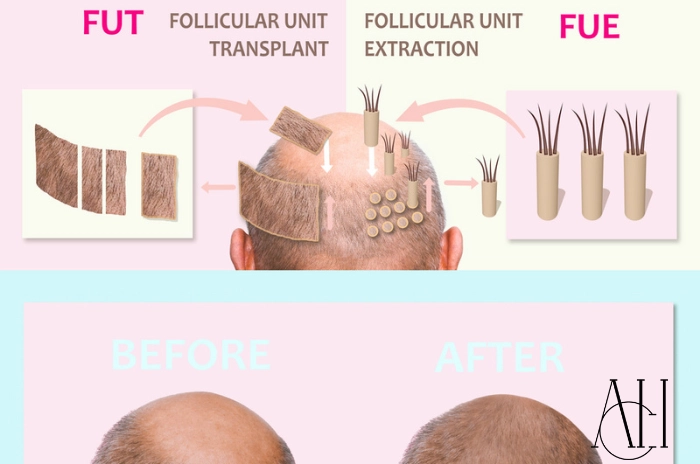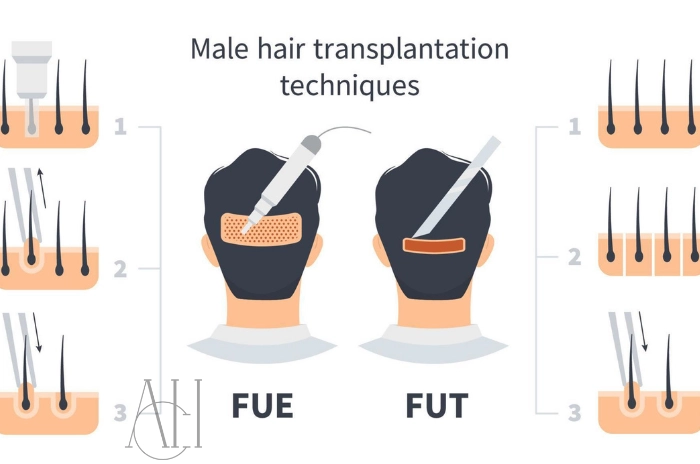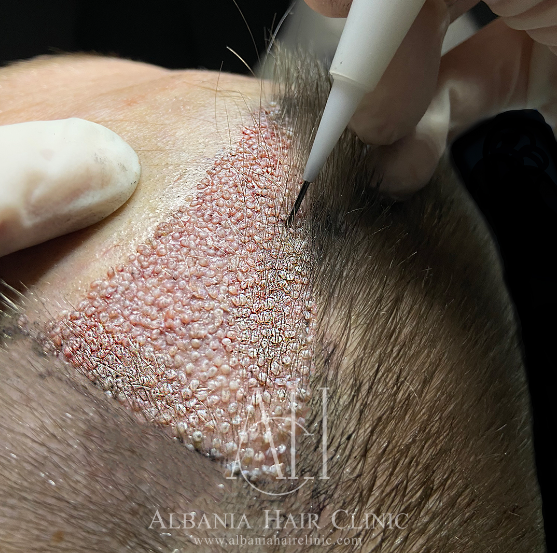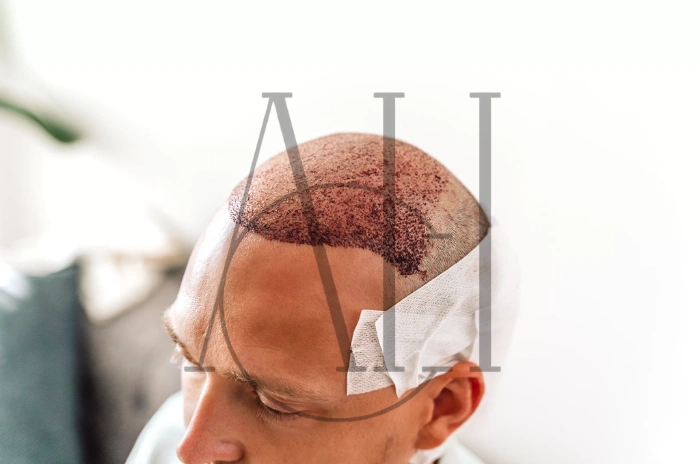Hair loss affects millions of people around the world. Thanks to medical advancements, hair transplants are now safer, more natural-looking, and more comfortable than ever. Two of the most popular methods today are Sapphire FUE and DHI (Direct Hair Implantation). But how do you know which one is right for you? In this guide, we will compare Sapphire FUE vs DHI, explore their key differences, and help you understand which method may suit your needs best. This detailed comparison will give you valuable insight into choosing the best hair transplant technique for your goals.
Table of Contents
ToggleWhat’s FUE?
Definition of FUE
FUE stands for Follicular Unit Extraction. It is a popular technique where individual hair follicles are extracted from the donor area (usually the back of the head) and implanted into the balding areas. This method is known for its precision and natural-looking results.
Why People Choose FUE
FUE is preferred because it leaves minimal scarring, has a shorter recovery time, and provides natural-looking results. It’s also less invasive than older techniques like FUT (Follicular Unit Transplantation). Many patients choose FUE for its ability to restore hairline density with minimal discomfort.
What Is Sapphire FUE?
Sapphire FUE Explained
Sapphire FUE is an advanced version of the traditional FUE technique. Instead of using steel blades to create channels in the scalp, sapphire blades are used. These are sharper, smoother, and more precise, which leads to improved accuracy during implantation.
Benefits of Sapphire Blades
-
Less trauma to the scalp
-
Faster healing
-
Higher graft survival rate
-
More precise incisions These advantages make Sapphire FUE a strong choice for patients seeking a more refined hair restoration process.
Direct Hair Implantation (DHI)
What is DHI?
Direct Hair Implantation (DHI) is another advanced hair transplant method. In DHI, the surgeon uses a special pen like tool called a Choi Implanter Pen to extract and implant the hair follicles in one step. This technique allows for greater control over implantation.
DHI Benefits
-
No need to open channels beforehand
-
Better control over angle, direction, and depth
-
Less bleeding
-
Suitable for smaller areas DHI is ideal for achieving natural density in the hairline or for treating limited bald spots.
Albania Hair Clinic – Trapianto Capelli in Albania (@albaniahairclinic)’in paylaştığı bir gönderi
The Sapphire FUE Technique
The Process
-
Local anesthesia is applied.
-
Hair follicles are extracted using a micro motor.
-
Tiny incisions are made using sapphire blades.
-
Grafts are placed in the incisions manually.
Ideal For
-
Larger areas of hair loss
-
Patients who want dense and natural-looking hair Sapphire FUE is often recommended for individuals looking for comprehensive coverage with a faster healing time.
Key Differences Between Sapphire FUE and DHI
Tools Used
-
Sapphire FUE: Sapphire blade and forceps
-
DHI: Choi pen (for both implantation and channel creation)
Implantation Technique
-
Sapphire FUE: Channels are created first, then grafts are placed
-
DHI: Follicles are implanted directly
Procedure Duration
-
Sapphire FUE may take longer due to channel creation
-
DHI can be quicker for small sessions, but longer for full coverage Understanding these differences is essential when selecting the most suitable technique for your hair transplant.
Sapphire FUE vs. DHI: Comprehensive Insights to Guide Your Choice
Healing and Recovery
-
Sapphire FUE: Faster healing due to precise incisions
-
DHI: Slightly longer recovery due to deeper penetration of implanter
Density Results
-
Sapphire FUE: High density, especially good for large areas
-
DHI: High precision allows great density in small or sensitive zones
Scalp Trauma
-
Sapphire blades cause less tissue damage compared to steel
-
DHI is minimally invasive but still involves pressure from the pen device Choosing the right method depends on your scalp condition and desired aesthetic results.

The Role of Sapphire FUE and DHI in Modern Hair Restoration
Both techniques are widely used and offer excellent results. Sapphire FUE is often chosen for larger hair restoration, while DHI is better for fine-tuning, especially in areas like the hairline and temples. These advanced procedures are now the gold standard in modern hair restoration.
Modern Hair Transplant Clinics may also combine both techniques based on the patient’s specific needs. Customizing the treatment plan leads to more successful outcomes.
Sapphire FUE vs DHI: Which Is More Common?
Global Trends
FUE has been around longer and is more common worldwide. Sapphire FUE has gained popularity because of its improved tools and results.
DHI’s Growing Popularity
DHI is becoming more popular for its simplicity and precise control, especially among younger patients looking for minimal downtime. Clinics offering DHI attract clients who prioritize detail and hairline accuracy.
DHI vs. Sapphire FUE: What’s the Difference?
Summary Table:
| Feature | Sapphire FUE | DHI |
|---|---|---|
| Tools | Sapphire blade | Choi Implanter Pen |
| Channel creation | Separate step | Done during implantation |
| Best for | Larger areas | Small or sensitive areas |
| Healing | Very fast | Moderate |
| Density | Very high | High (precise placement) |
This comparison helps patients make informed decisions when selecting a hair transplant method.

Cost Comparison: DHI vs FUE
Which Is Cheaper?
Sapphire FUE is usually more affordable than DHI. This is because DHI is more time-consuming and requires special tools and more staff.
Price Range
-
Sapphire FUE: $1,500 – $3,000 (depending on clinic and location)
-
DHI: $2,000 – $4,000 or more
Prices vary by country, clinic reputation, and the number of grafts needed. Always request a personalized quote for accurate cost comparisons.
Treatment Differences of FUE and DHI
Surgery Time
-
FUE can be faster when treating large bald areas
-
DHI takes longer due to the one-by-one implantation
Aftercare Needs
Both require similar aftercare, including gentle washing, avoiding sun, and not touching the scalp. Follow-up appointments are needed in both cases. Proper aftercare is essential for achieving long-term success with either method.
Effectiveness & Results of FUE and DHI
Long-Term Results
Both techniques offer excellent, long-lasting results. Hair starts growing 3–4 months post-surgery and continues to improve for up to 12 months.
Satisfaction Rates
Most patients are happy with either method, especially if performed by an experienced surgeon. High satisfaction comes from realistic expectations and skilled treatment.
Which Method Is Right for You?
Consider Your Needs
-
Choose Sapphire FUE if you want full coverage and fast healing.
-
Choose DHI if you’re focused on hairline design or have a small area to treat.
Ask Your Surgeon
Always get a full scalp analysis. Your doctor will recommend the best method based on your hair type, loss pattern, and expectations. A personalized plan increases your chances of excellent results.

Pain & Comfort Levels of FUE and DHI
During Surgery
Both are performed under local anesthesia. Patients may feel pressure but no pain. The procedures are considered minimally invasive.
After Surgery
Soreness and swelling are mild and last a few days. Sapphire FUE may cause slightly less discomfort due to smoother incisions. Always follow your clinic’s post-op care to manage symptoms effectively.
FUE vs DHI Hair Transplant Procedures: Which is Better?
No One-Size-Fits-All
There is no single answer. Each method has its strengths. What works best for one person may not be ideal for another. Your lifestyle and hair loss level will also influence the choice.
Talk to a Specialist
A consultation with a professional hair transplant clinic will help you choose the right path for your goals. Always choose a certified and experienced clinic for safe, effective results.
Both Sapphire FUE and DHI are excellent hair transplant techniques. Sapphire FUE offers faster healing and high-density coverage, while DHI gives more precise control and natural-looking results in detailed areas. Choosing between them depends on your personal hair loss situation, budget, and desired outcome. Consult with a trusted clinic to determine which method is best for you. A successful hair restoration journey begins with the right information and professional guidance.
Frequently Asked Questions
What is the main difference between Sapphire FUE and DHI?
Sapphire FUE uses sapphire blades to make channels before placing the grafts, while DHI implants grafts directly using a special pen.
Which method gives better results – Sapphire FUE or DHI?
Both give great results. Sapphire FUE is better for large areas, while DHI offers more control for hairlines and small zones.
Is DHI more painful than Sapphire FUE?
No. Both are done under local anesthesia and are mostly painless. Some patients feel mild pressure but no real pain.
Which is more expensive – DHI or Sapphire FUE?
DHI is usually more expensive than Sapphire FUE because it takes more time and uses special tools like the Choi Implanter Pen.
How do I choose between DHI and Sapphire FUE?
Your doctor will check your hair type, loss pattern, and goals to recommend the best method for your needs. Always ask for a personal consultation.




